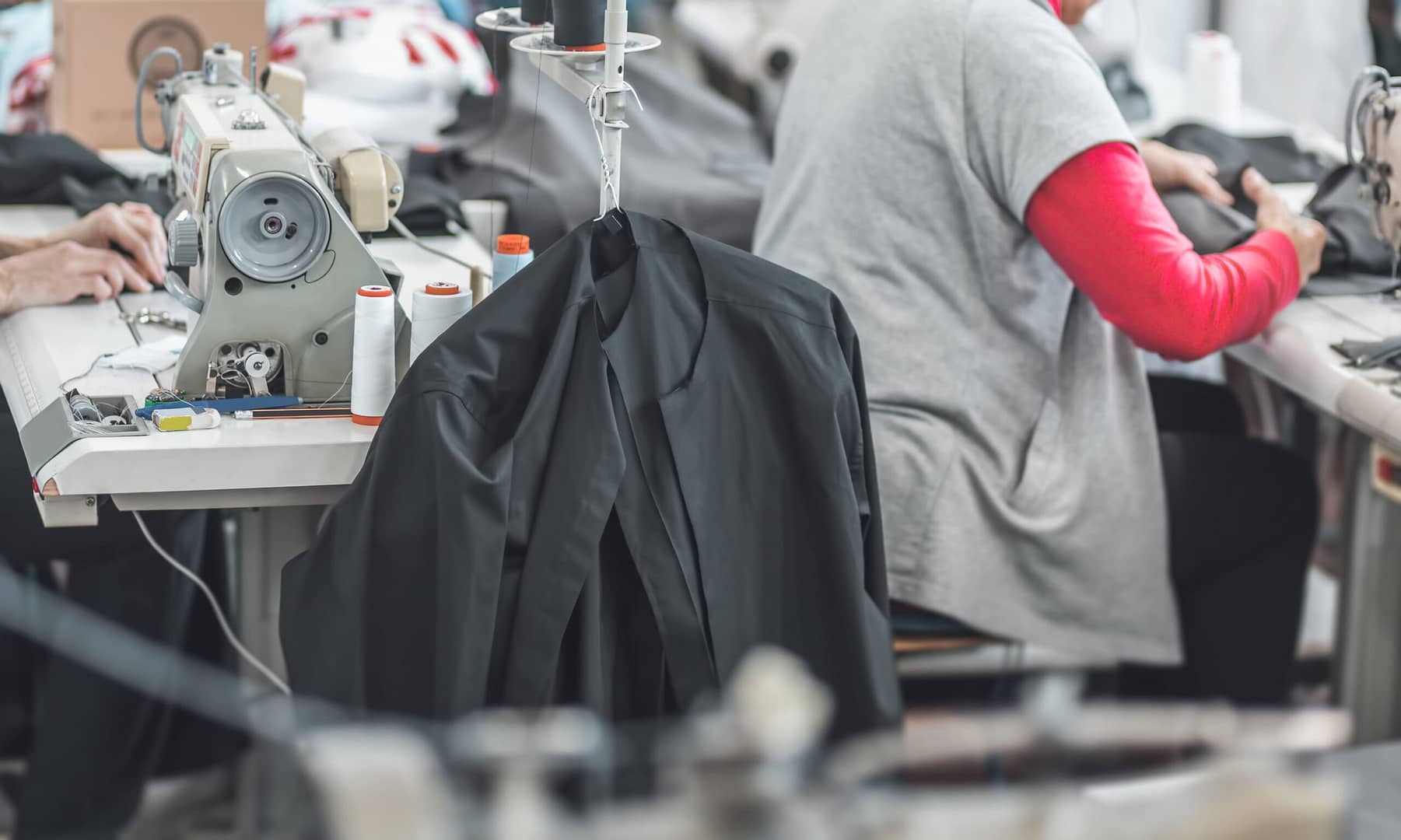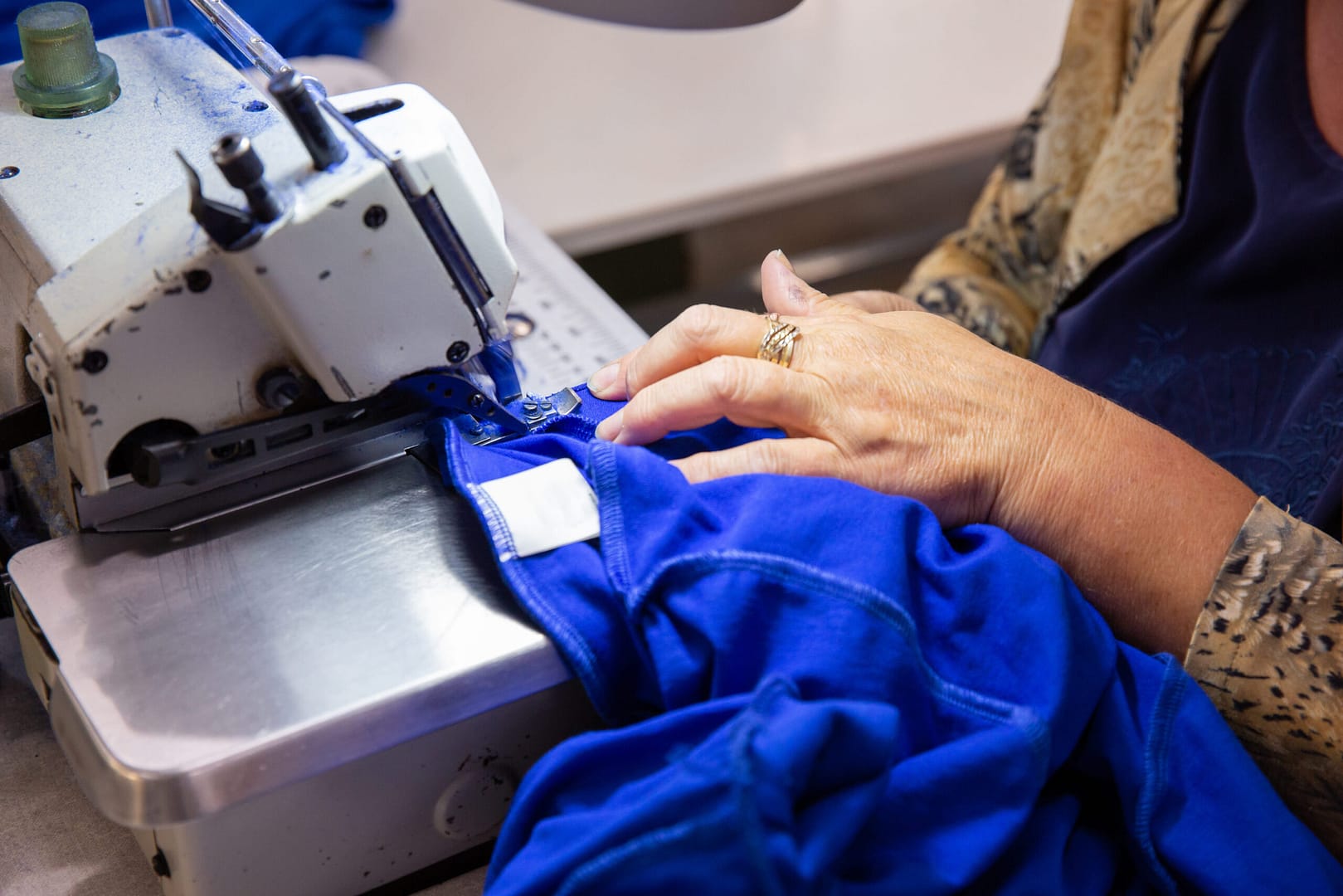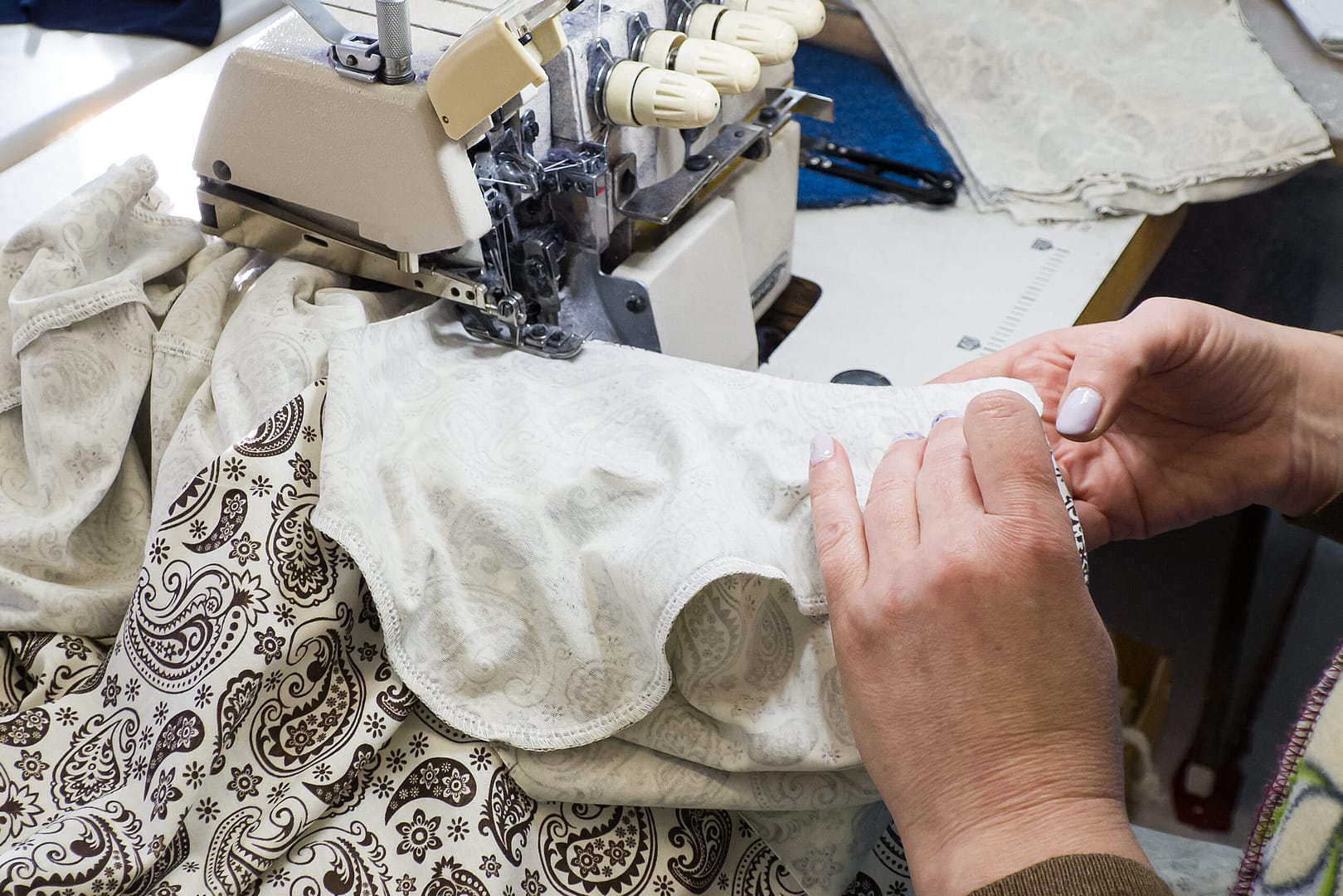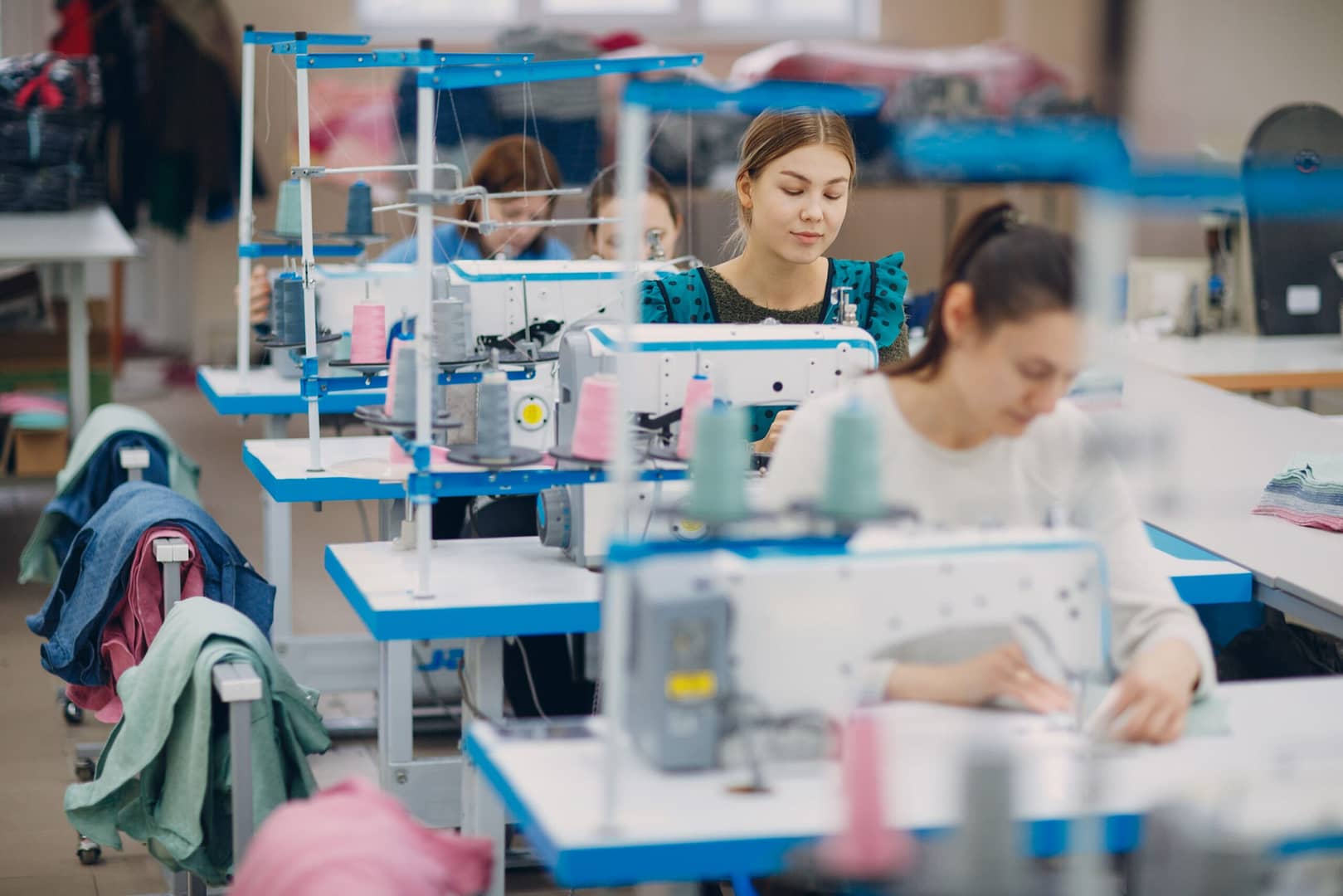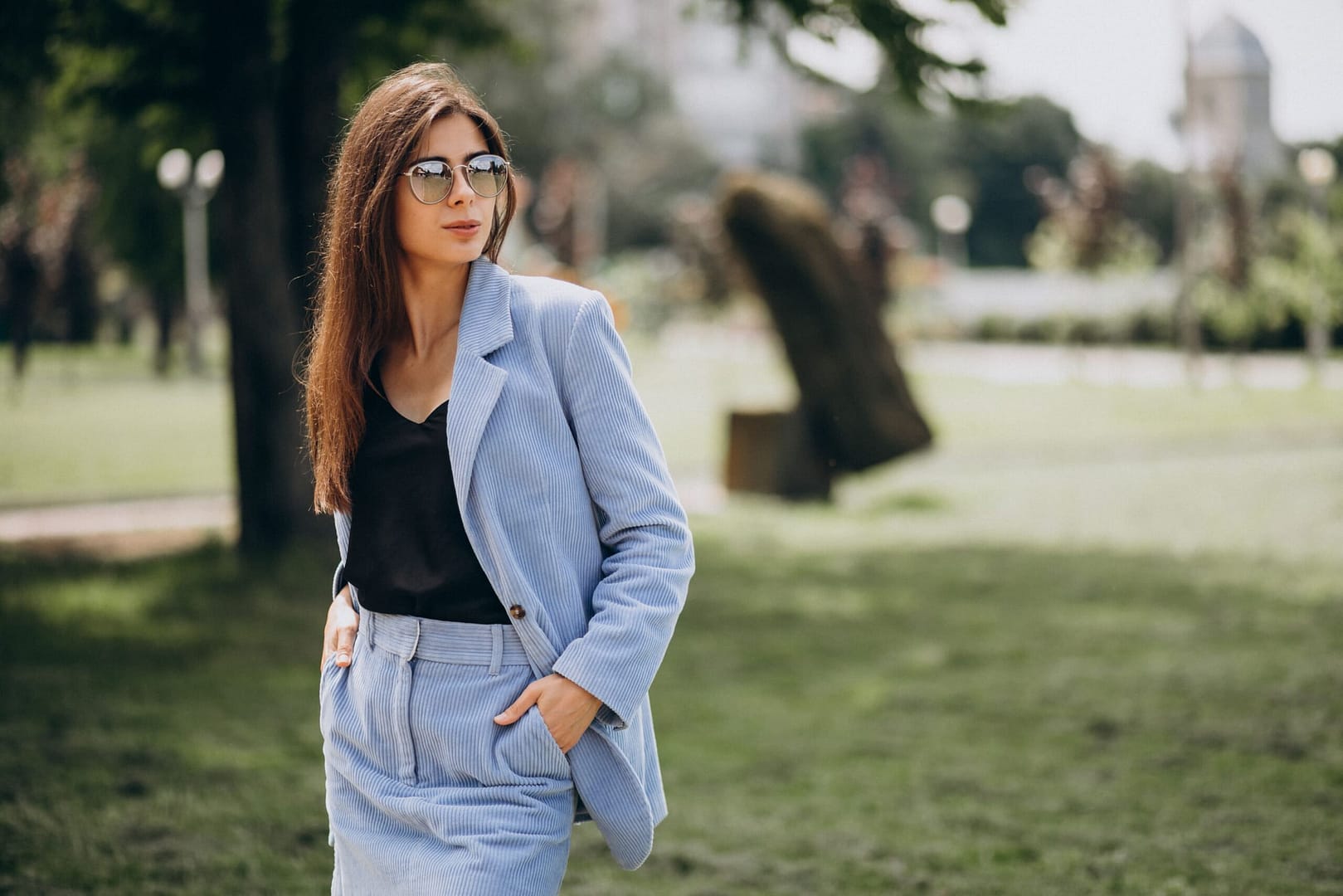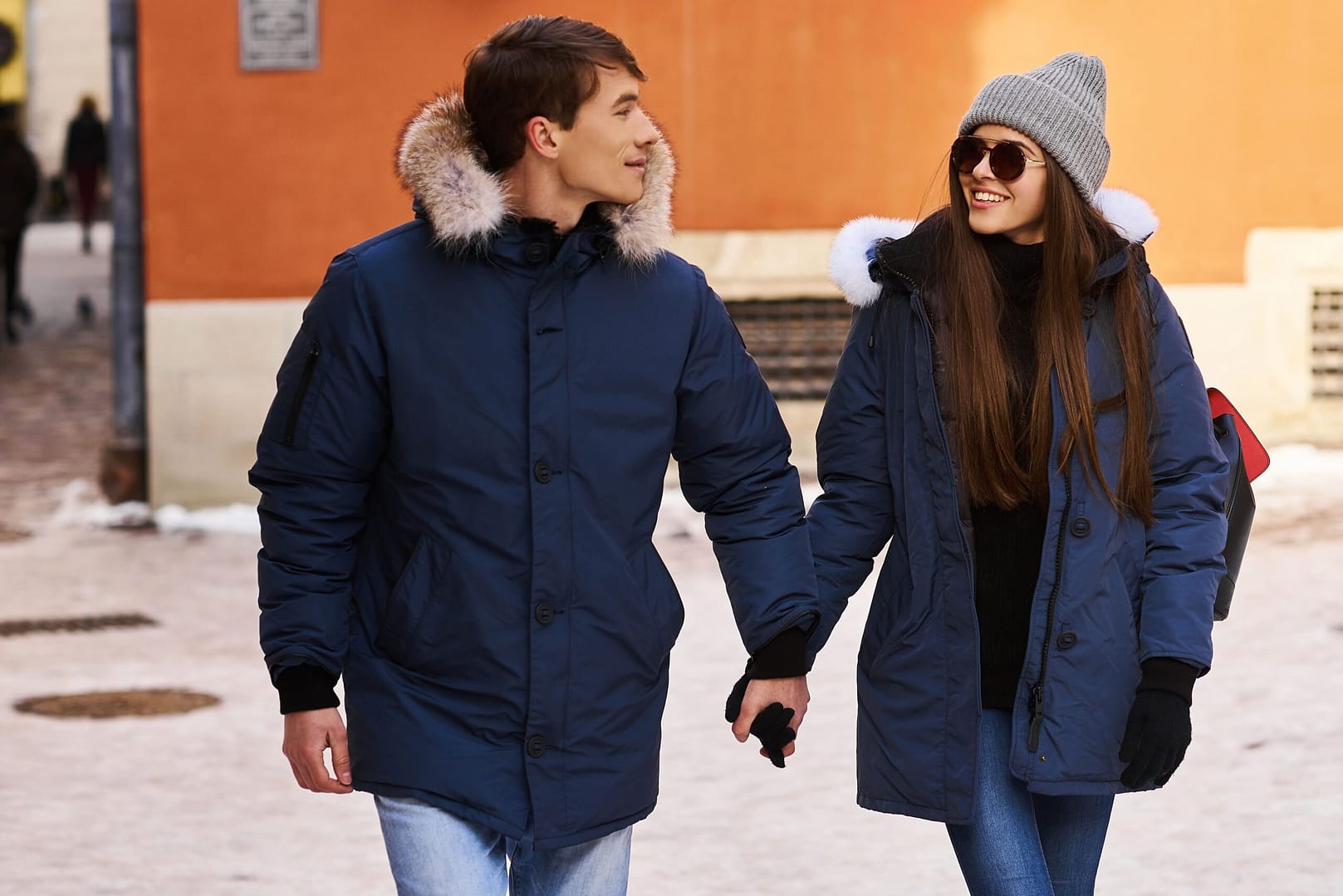The women’s apparel market is a dynamic and thriving industry, offering ample opportunities for startups to make their mark. Among the vast array of clothing options, women’s tops stand out as a popular choice for entrepreneurs looking to cater to versatile consumer needs. Whether it’s casual tees, elegant blouses, or trendy crop tops, mastering the manufacturing process is key to delivering high-quality products and building a successful brand. Here are some insider tips to guide you on women’s tops manufacturing.
Key Takeaways
- Start with a strong design concept to set the tone for your women’s tops, considering the target audience and occasion.
- Embrace sustainable practices by using eco-friendly materials and reducing waste, which not only benefits the planet but also appeals to conscious consumers.
- Ensure precision in pattern-making and cutting to create well-fitted garments that maintain their intended design.
- Implement rigorous quality control measures to enhance customer satisfaction and protect your brand’s reputation.
- Explore various styles and personalization options to cater to diverse tastes and body types, making your tops versatile for different occasions.
- Invest in professional packaging and thoughtful labeling to create a memorable unboxing experience that strengthens your brand identity.
- Stay informed about trends and innovations in manufacturing to continuously improve your processes and product offerings.
Understanding the Manufacturing Process
Key Steps in Manufacturing
Initial design and concept creation
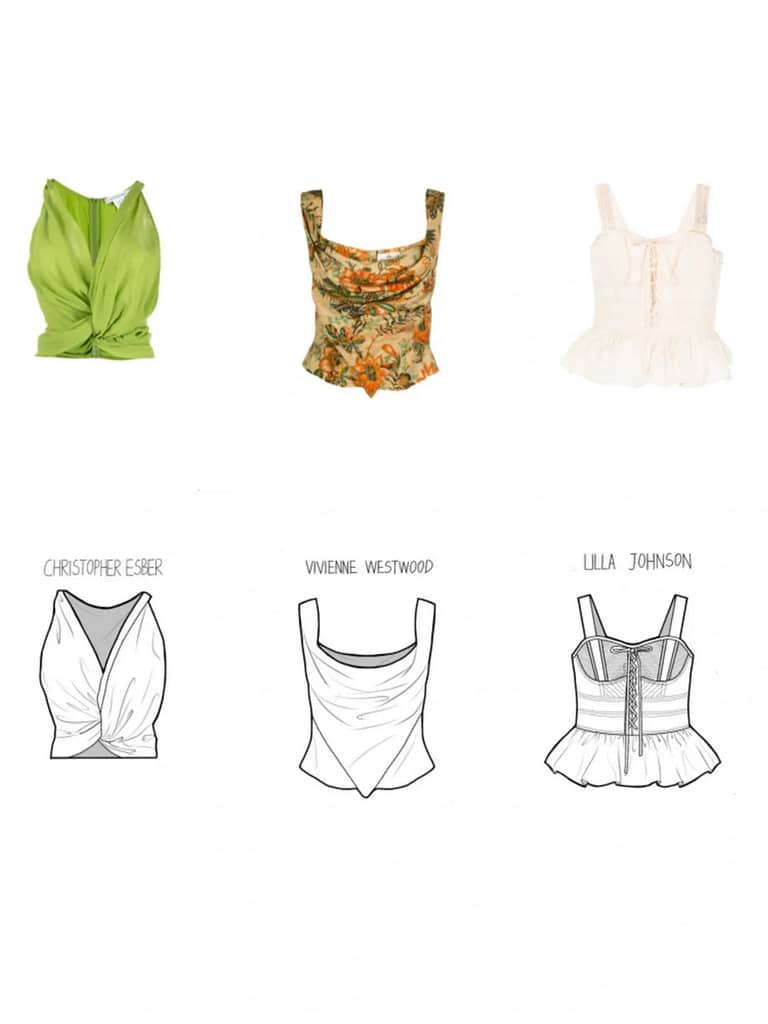
Every great women’s top starts with a vision. You begin by brainstorming ideas, sketching designs, and defining the overall concept. This step sets the tone for the entire manufacturing process. Think about the purpose of the top—whether it’s for casual wear, formal occasions, or professional settings. Your creativity shines here as you decide on colors, patterns, and styles that will resonate with your target audience.
Pattern-making and blueprint development
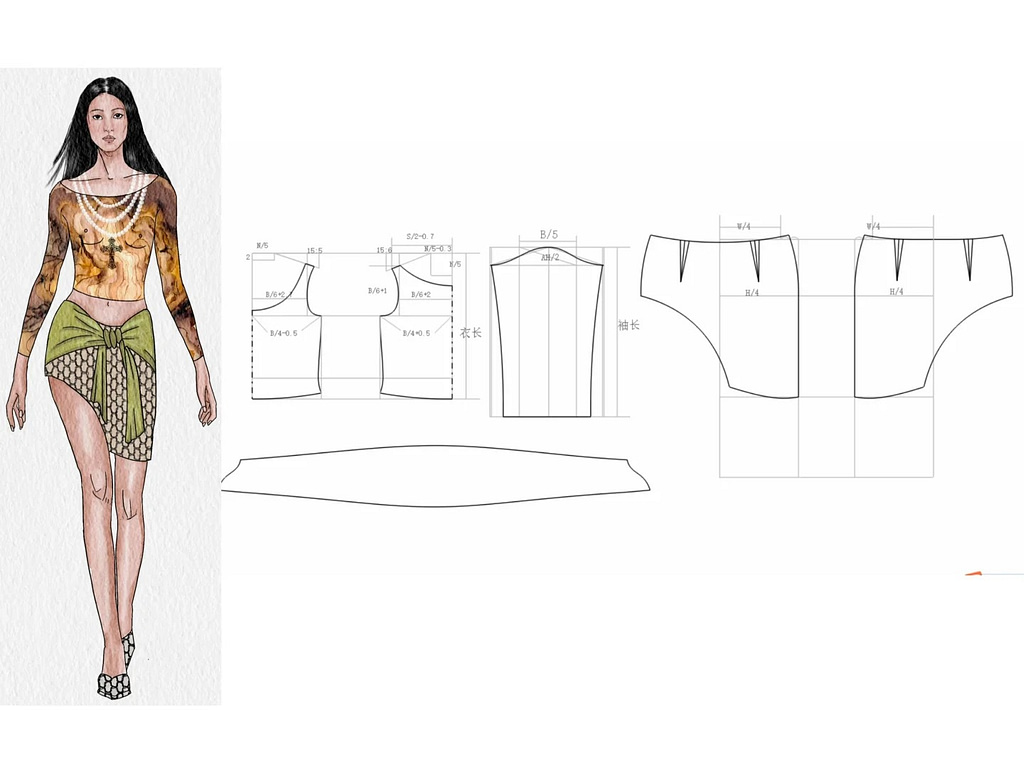
Once the design is ready, you move to pattern-making. This step transforms your concept into a tangible blueprint. Using precise measurements, you create patterns that serve as templates for cutting fabric. Accuracy is crucial here. A well-made pattern ensures the final product fits perfectly and maintains the intended design. Modern tools like CAD (Computer-Aided Design) software can make this process faster and more precise.
Fabric cutting and assembly
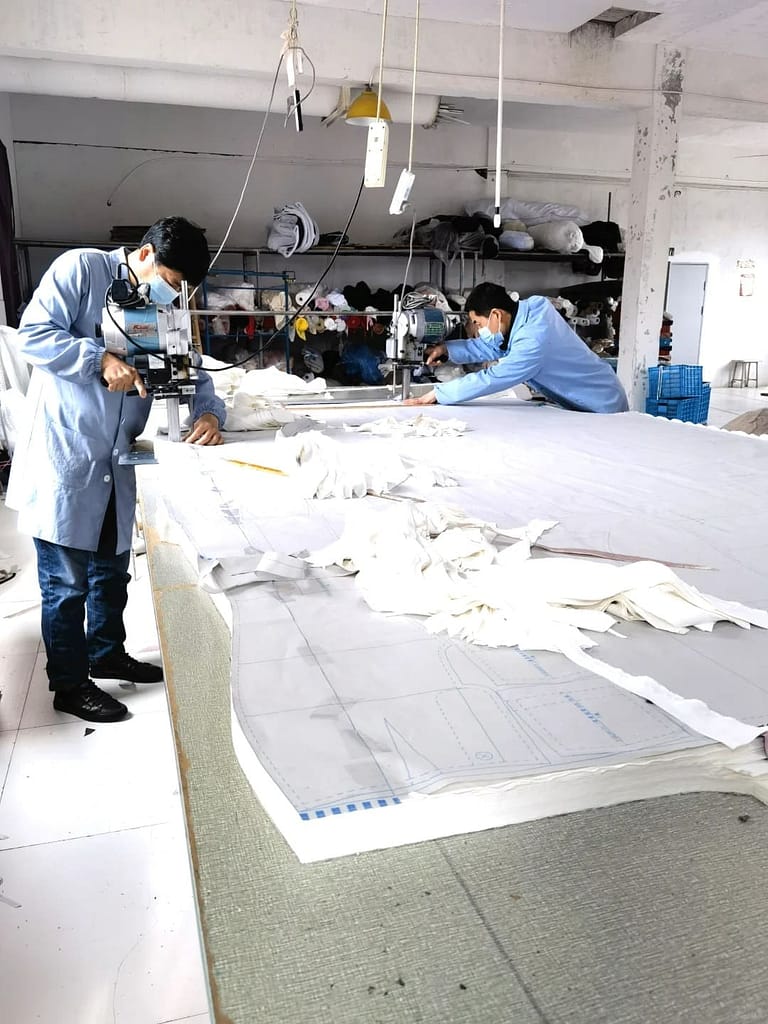
With patterns in hand, you cut the fabric. This step requires precision and care to avoid waste and ensure consistency. Advanced cutting machines or traditional shears can be used, depending on your setup. After cutting, you assemble the pieces. Stitching them together brings your design to life. This stage combines craftsmanship with efficiency, ensuring every seam is secure and every detail aligns.
Quality control and final inspection
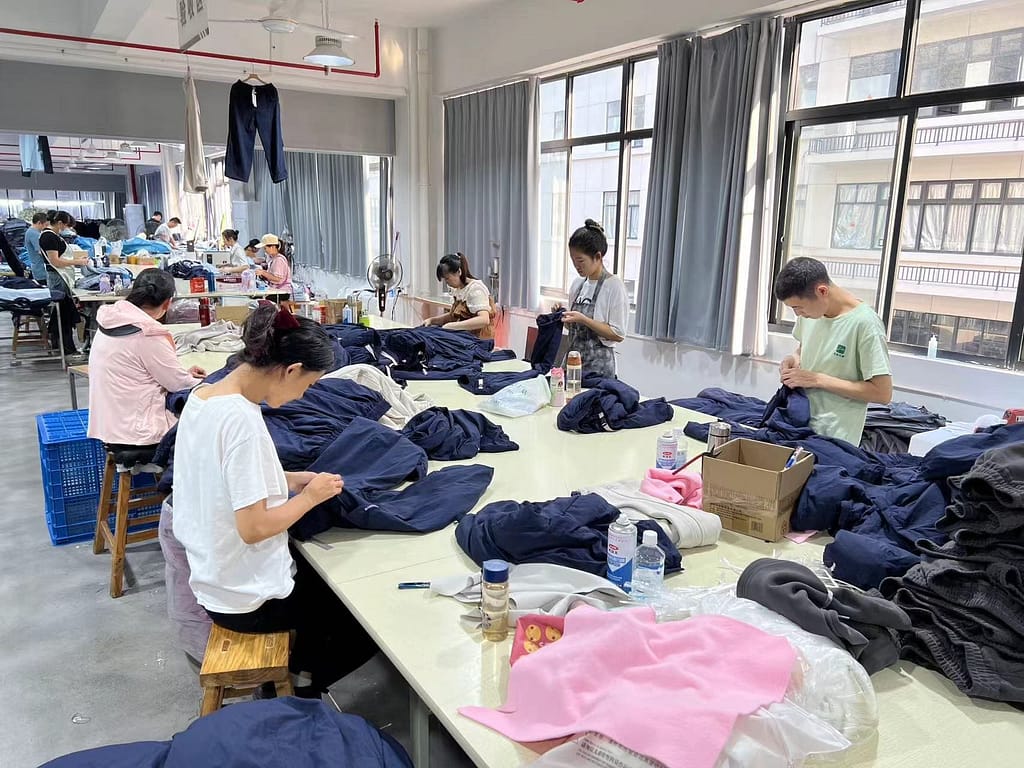
Before a top reaches your customers, it undergoes rigorous quality checks. You inspect every piece for stitching flaws, fabric defects, and size inconsistencies. This step guarantees that your product meets high standards. A thorough inspection not only enhances customer satisfaction but also strengthens your brand’s reputation.
Collaboration in Manufacturing
Roles of designers, pattern makers, and technicians
Manufacturing women’s tops is a team effort. Designers bring creativity and vision to the table. Pattern makers translate those ideas into workable templates. Technicians handle the machinery and ensure smooth production. Each role is vital. Without one, the process would falter. You rely on this collaboration to turn concepts into reality.
Importance of teamwork and expertise
Teamwork drives success in manufacturing. When everyone works together, the process becomes seamless. Expertise in each role ensures efficiency and quality. Modern manufacturing thrives on this synergy. Unlike traditional methods, which often lacked precision and connectivity, today’s processes embrace smart technologies and automation. This shift allows you to adapt quickly to trends and produce high-quality garments with ease.
“Alone we can do so little; together we can do so much.” – Helen Keller
This quote perfectly captures the essence of collaboration in manufacturing. By fostering a strong team dynamic, you create not just beautiful tops but also a smooth and efficient production process.
Designing Women’s Tops and Blouses
Identifying the Target Audience
Understanding customer needs and preferences
When designing women’s tops and blouses, understanding your audience is key. Think about who will wear your designs. Are they young professionals, stay-at-home moms, or college students? Each group has unique preferences. Some may prioritize comfort, while others lean toward bold, trendy styles. Dive into their world. Observe their shopping habits, favorite colors, and preferred fabrics. This insight helps you create pieces that truly resonate.
Designing for different occasions and body types
Occasions play a big role in design. A blouse for a formal dinner differs from one for a casual brunch. You need to tailor your designs to fit these moments. Body types matter too. Women come in all shapes, and your tops should celebrate that diversity. Offer options for hourglass, pear, apple, and rectangle shapes. When you design with inclusivity in mind, you help every woman feel confident and stylish.
Exploring Styles and Personalization
Necklines, sleeves, and other design elements
The details make all the difference. Necklines and sleeves define the overall style of a top. A V-neck adds elegance, while a scoop neck feels casual. Sleeves can transform a blouse—think puff sleeves for drama or cap sleeves for simplicity. Experiment with these elements to craft unique looks. Don’t forget about hems, buttons, and collars. These small touches elevate your designs and set them apart in women’s fashion.
Incorporating unique details like embroidery or prints
Personalization adds charm. Embroidery, prints, or embellishments give your tops character. Floral embroidery can add a feminine touch, while geometric prints feel modern. You can also experiment with textures like lace or sequins. These details make your designs memorable. They allow customers to choose the right blouse that reflects their personality and style.
Versatility in Design
Creating tops for formal, casual, and professional settings
Versatility is a game-changer in women’s fashion. A well-designed top should transition seamlessly between settings. For formal occasions, opt for elegant fabrics like silk or satin. Casual tops can feature breathable materials like cotton or linen. For professional wear, focus on clean lines and neutral tones. By offering versatile styles, you cater to a wider audience and meet their varied needs.
“Fashion is not something that exists in dresses only. Fashion is in the sky, in the street, fashion has to do with ideas, the way we live, what is happening.” – Coco Chanel
This quote reminds us that fashion is about more than clothing. It’s about creating pieces that fit into people’s lives. When you design with versatility in mind, you make women’s tops and blouses that are not just stylish but also practical.
Types of Women’s Tops
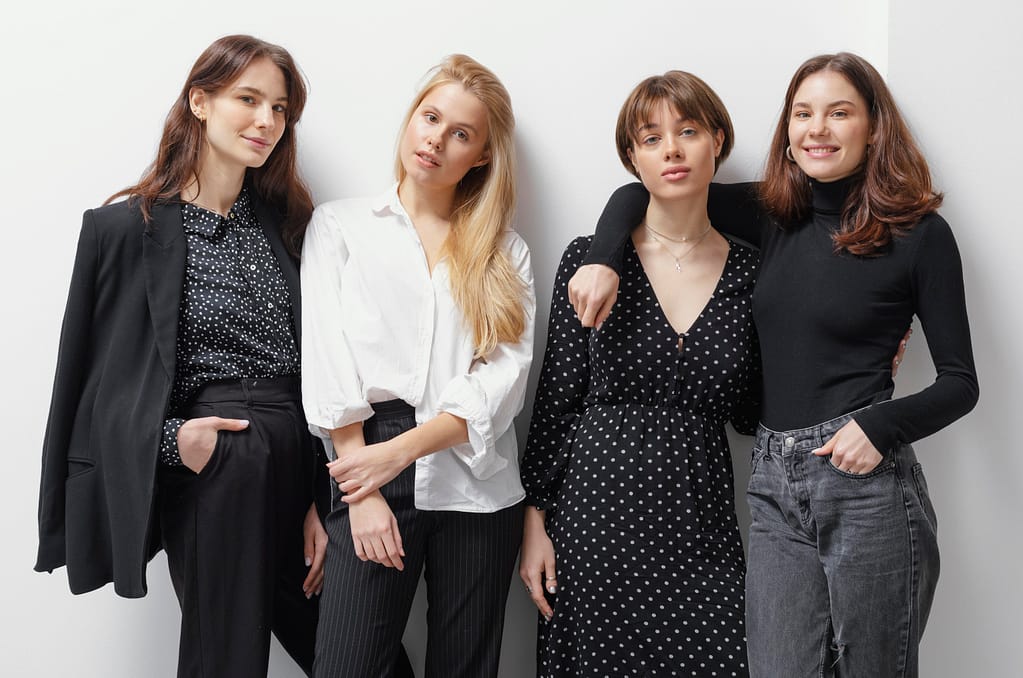
When it comes to women’s fashion, the variety of blouse styles available ensures there’s something for everyone. Whether you’re dressing for a formal event, a casual outing, or simply looking for a flattering fit, understanding the different types of blouse styles can help you make the perfect choice.
Popular Styles of Blouses
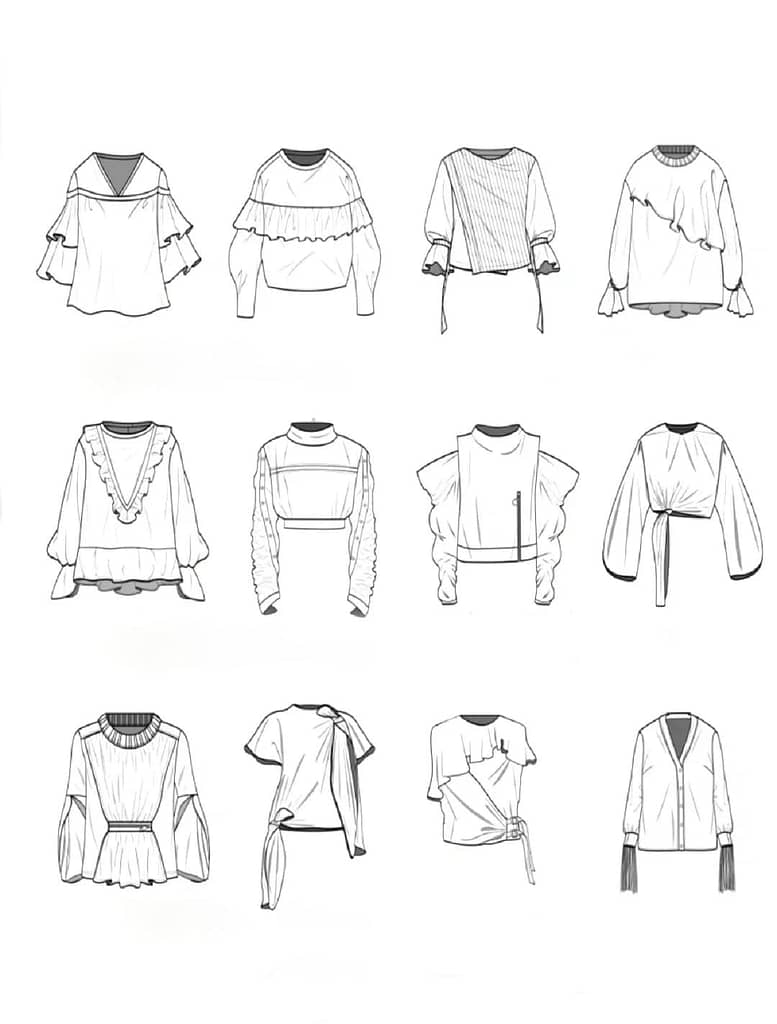
Blouses come in a wide range of designs, each offering its own unique charm. Here are some of the most popular styles:
- Classic Button-Down: This timeless blouse is a wardrobe staple. Its clean lines and structured fit make it ideal for professional settings or casual wear when paired with jeans.
- Tunic: Tunics provide a relaxed and flowy fit, making them perfect for comfort without compromising on style. They pair beautifully with leggings or slim-fit pants.
- Peasant Blouse: Known for its bohemian vibe, this blouse often features loose sleeves, embroidery, or lace details, adding a touch of whimsy to your outfit.
- Wrap Blouse: The wrap design flatters your figure by accentuating the waist. It’s a versatile choice for both work and social gatherings.
- Crop Top: This trendy option is perfect for casual outings or summer days. Pair it with high-waisted skirts or pants for a balanced look.
- Halter Top: With its neckline that ties around the neck, the halter top adds a chic and summery feel to your wardrobe.
- Off-the-Shoulder Blouse: This style exudes femininity and elegance, making it a great choice for parties or date nights.
- Tank Top and Camisole: These sleeveless options are great for layering or wearing on their own during warmer months.
- Bodysuit: A sleek and fitted option, bodysuits stay tucked in and pair well with skirts or tailored pants for a polished look.
Each of these styles offers something unique, allowing you to express your personality and adapt to different occasions effortlessly.
Styles by Occasion
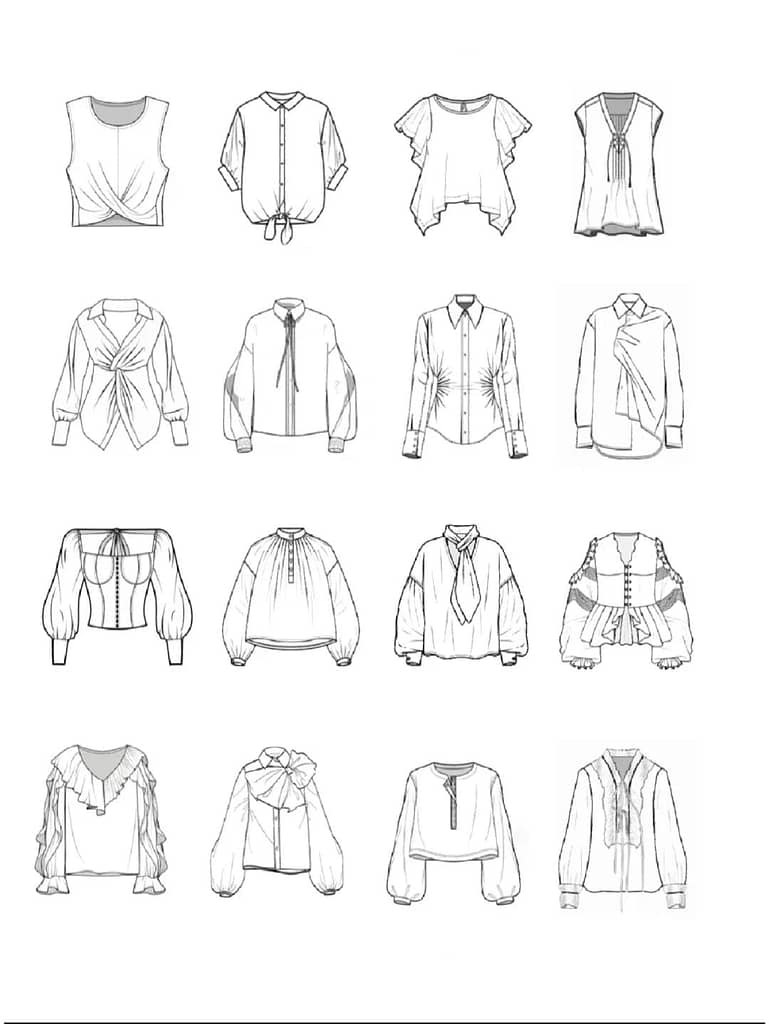
Choosing the right blouse style by occasion can elevate your outfit and ensure you feel confident. Here’s how you can match your blouse to the event:
- Formal: For formal settings, opt for classic button-downs, ruffled blouses, or bow-tie designs. These styles exude sophistication and pair well with skirts or tailored pants.
- Casual: Casual outings call for relaxed fits like tunics, peasant blouses, or crop tops. These styles prioritize comfort while keeping you stylish.
- Work: Professional environments demand clean and structured designs. Button-downs, wrap blouses, or blouses with subtle pleats work wonders in creating a polished look.
- Party: For festive occasions, go bold with sequin, lace, or sheer blouses. Statement sleeves or crop tops can add a touch of glamour to your party outfit.
- Summer: Lightweight fabrics and sleeveless styles like tank tops or halter tops keep you cool and fashionable during warmer months.
- Winter: Layered looks with long-sleeve blouses or those featuring bishop or puff sleeves add warmth and elegance to your winter wardrobe.
By selecting the right blouse style for each occasion, you can ensure your outfit aligns perfectly with the event’s vibe.
Styles by Body Type
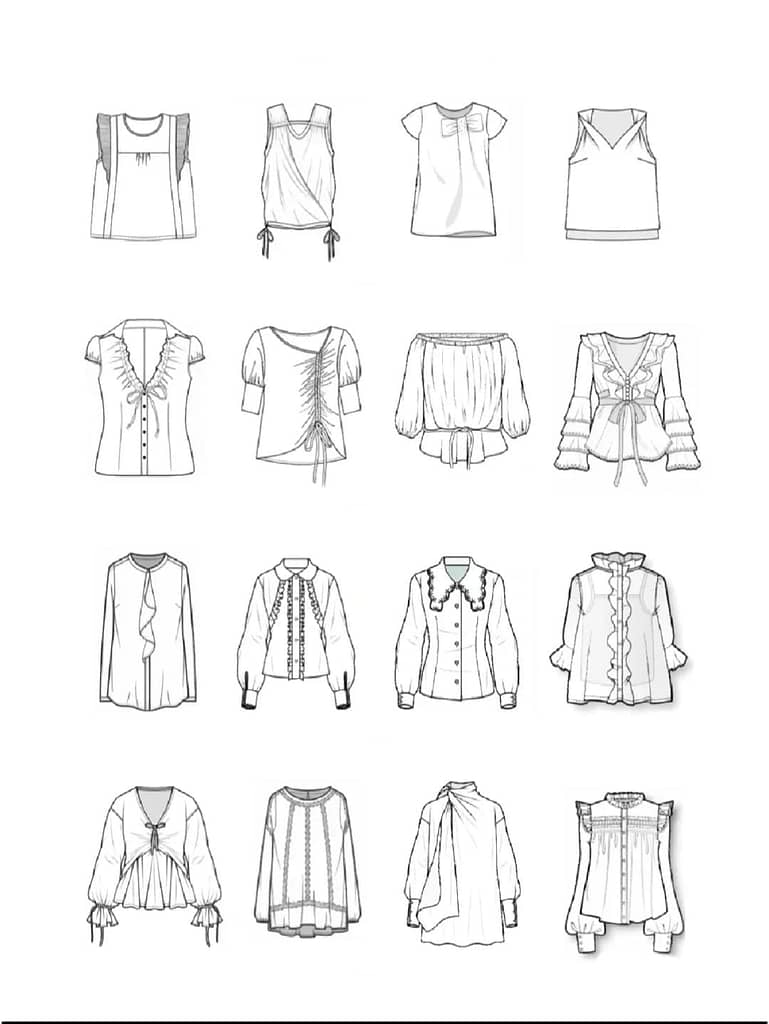
Understanding your body type can help you choose blouses that enhance your natural shape. Here’s a quick guide to blouse style by body type:
- Hourglass: Highlight your waist with wrap blouses or fitted designs. These styles emphasize your curves and create a balanced silhouette.
- Apple: Opt for flowy blouses like tunics or peasant styles. These designs draw attention away from the midsection and create a flattering look.
- Pear: Balance your proportions with blouses that feature statement sleeves or embellishments near the shoulders. These styles add volume to your upper body.
- Rectangle: Create the illusion of curves with blouses that cinch at the waist or have ruffles and pleats. These details add dimension to your frame.
Choosing the right blouse style for your body type ensures you feel comfortable and confident in your outfit.
“Buying less, but better, more formal tops and blouses can work wonders.”
This advice from the Curated Closet movement reminds us to invest in quality pieces. Natural fibers like silk, cotton, and linen not only feel luxurious but also last longer, making them a smart choice for any wardrobe.
By exploring these styles and understanding how they fit into your life, you can build a versatile collection of blouses that cater to every occasion and body type.
Styles by Sleeve and Neckline
The sleeve and neckline of a blouse can completely transform its look and feel. These elements not only define the overall aesthetic but also influence how the blouse fits into your wardrobe. Let’s explore the different blouse style by sleeve type and neckline options to help you make the perfect choice.
Sleeve Types: Cap, Short, Three-Quarter, Long, Bell, Puff, Bishop
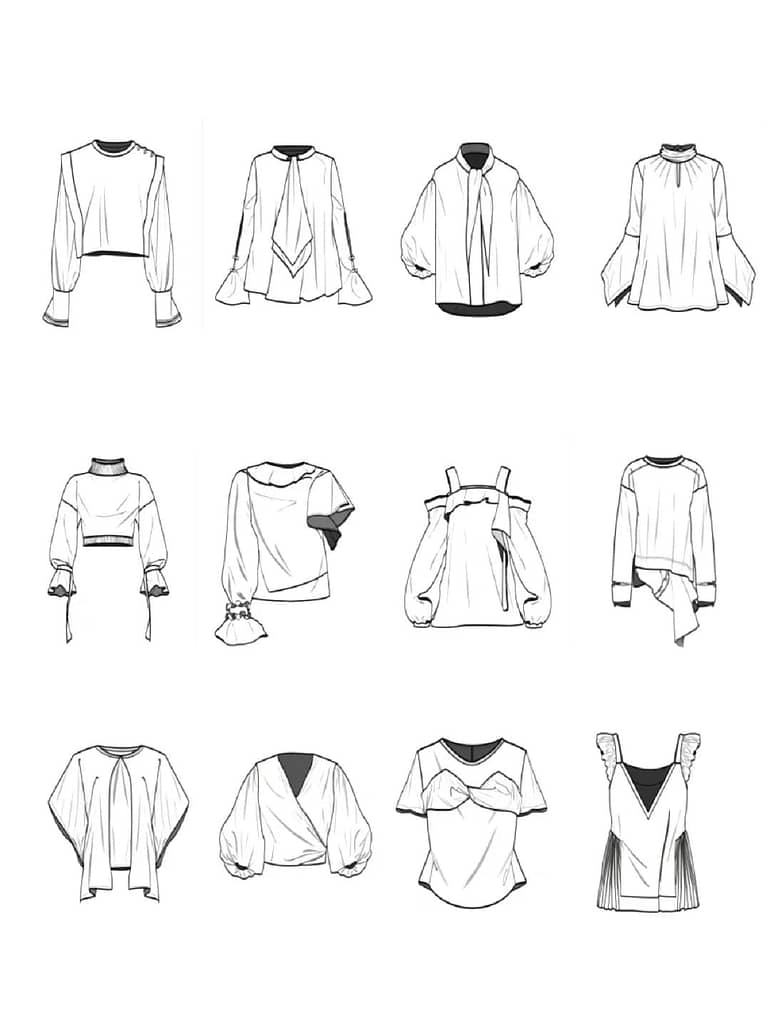
Sleeves play a significant role in shaping the personality of a blouse. Each sleeve type offers a unique vibe and functionality:
- Cap Sleeves: These short sleeves barely cover the shoulders, giving a delicate and feminine touch. They work well for casual and summer blouses.
- Short Sleeves: A versatile option, short sleeves provide comfort and are ideal for warm weather or layering under jackets.
- Three-Quarter Sleeves: Ending between the elbow and wrist, these sleeves strike a balance between coverage and style. They’re perfect for transitional seasons.
- Long Sleeves: A classic choice for formal or professional settings. Long sleeves add elegance and are great for cooler weather.
- Bell Sleeves: These sleeves flare out toward the wrist, creating a dramatic and flowy effect. They add a bohemian or vintage-inspired flair to your blouse.
- Puff Sleeves: Featuring extra fabric at the shoulder, puff sleeves bring a playful and romantic vibe. They’re perfect for making a bold fashion statement.
- Bishop Sleeves: Loose-fitting and gathered at the wrist with a cuff, bishop sleeves exude sophistication. They add a touch of elegance and pair beautifully with formal or evening blouses.
Each sleeve type offers something special, allowing you to express your personality and adapt your blouse to different occasions.
Neckline Types: V-Neck, Scoop Neck, Boat Neck, Crew Neck, Square Neck, High Neck, Collared Neck
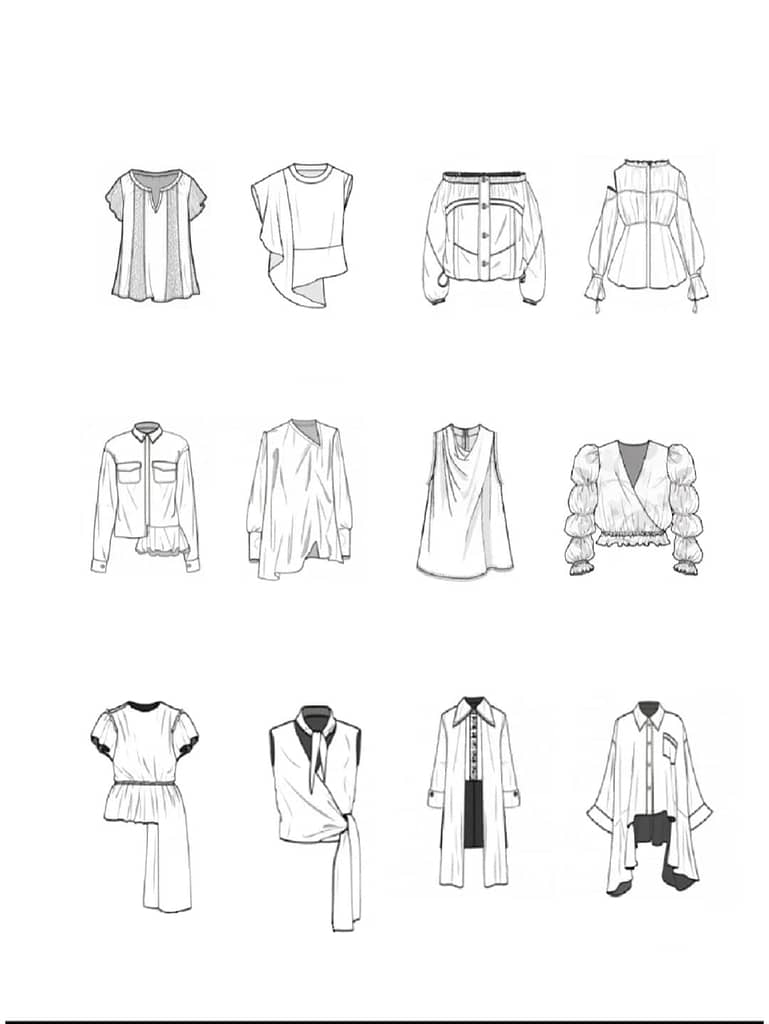
The neckline of a blouse defines its overall silhouette and determines how it frames your face and shoulders. Here are some popular neckline styles:
- V-Neck: This neckline elongates the neck and creates a slimming effect. It’s a flattering choice for both casual and formal blouses.
- Scoop Neck: With its rounded shape, the scoop neck feels relaxed and approachable. It’s a great option for everyday wear.
- Boat Neck: This wide neckline runs horizontally across the collarbone, adding a touch of elegance. It works well for formal or semi-formal blouses.
- Crew Neck: A high, round neckline that offers a clean and modest look. Crew necks are ideal for layering or creating a polished appearance.
- Square Neck: This neckline creates sharp angles, adding structure and sophistication. It’s a stylish choice for modern blouses.
- High Neck: Covering the neck entirely, this neckline adds a regal and vintage-inspired charm. High neck blouses are perfect for winter or formal occasions.
- Collared Neck: A timeless option, the collared neck brings professionalism and structure. It’s a staple for workwear and classic button-down blouses.
Choosing the right neckline depends on your personal style and the occasion. For example, a V-neck or scoop neck works well for casual outings, while a high neck or collared blouse suits formal events.
“Details like sleeves and necklines can elevate a blouse from ordinary to extraordinary.”
This advice reminds us to pay attention to these elements when selecting or designing a blouse. They not only enhance the garment’s aesthetic but also ensure it complements your body shape and personal style.
By understanding these sleeve and neckline styles, you can build a versatile collection of blouses that cater to every occasion and mood. Whether you prefer the drama of bell sleeves or the simplicity of a crew neck, there’s a perfect combination waiting for you.
Material Selection and Fabric Types
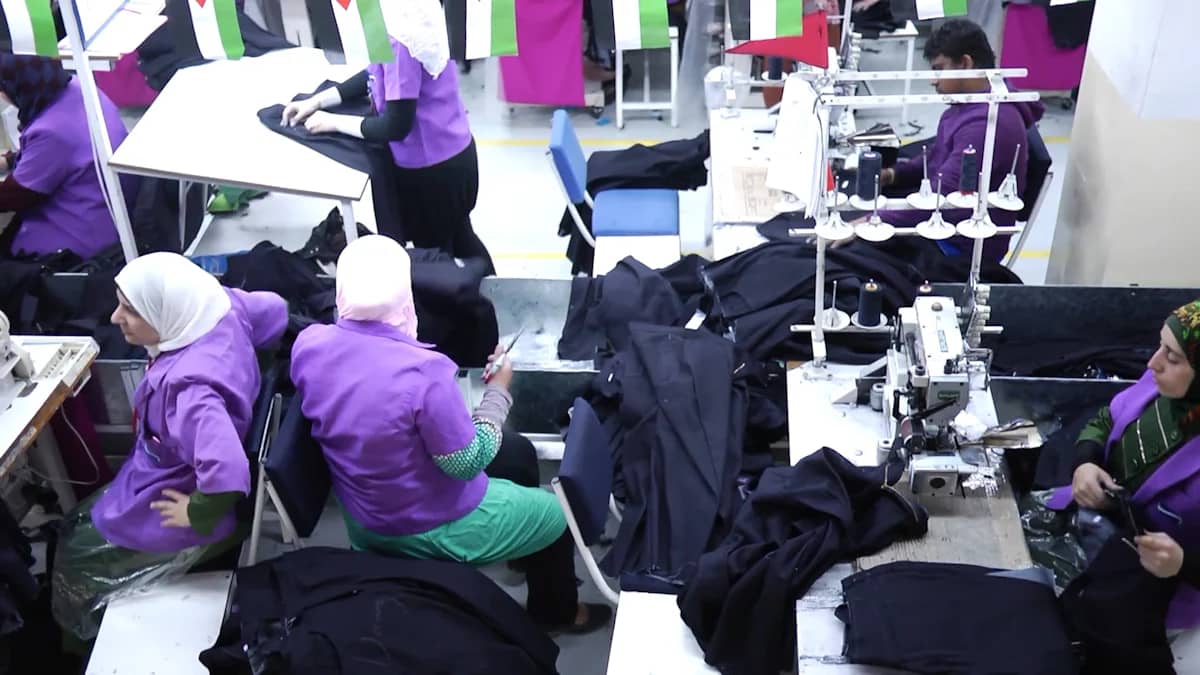
Choosing the right materials for women’s tops is a crucial step in creating garments that are stylish, comfortable, and durable. The fabric you select not only defines the look and feel of the blouse but also determines its functionality and appeal. Let’s explore the common fabrics, their properties, and sustainable options that are shaping the future of fashion.
Common Fabrics for Women’s Tops
The variety of fabrics available today allows you to craft tops that cater to different styles, occasions, and preferences. Here are some of the most popular choices:
- Cotton: Known for its softness and breathability, cotton is a versatile fabric that works well for casual and everyday wear.
- Polyester: This synthetic fabric offers durability and wrinkle resistance, making it ideal for professional and travel-friendly tops.
- Rayon: With its silky texture, rayon mimics the elegance of natural fibers like silk but comes at a more affordable price.
- Modal: A type of rayon, modal is lightweight and stretchy, providing exceptional comfort for fitted tops.
- Linen: Perfect for summer, linen is breathable and has a natural texture that adds a touch of sophistication.
- Bamboo: This eco-friendly fabric is soft, moisture-wicking, and hypoallergenic, making it a great choice for sensitive skin.
- Tencel: Made from wood pulp, Tencel is both sustainable and luxurious, offering a smooth finish and excellent durability.
- Silk: Renowned for its elegance, silk adds a touch of luxury to formal blouses and evening wear.
- Jersey: A stretchy knit fabric, jersey is perfect for casual tops and layering pieces.
Each of these fabrics brings unique qualities to the table, allowing you to design tops that meet the diverse needs of your audience.
Properties of Fabrics
Understanding the properties of fabrics helps you make informed decisions when selecting materials for your designs. Here are some key attributes to consider:
- Breathability: Fabrics like cotton, linen, and bamboo allow air to circulate, keeping you cool and comfortable in warm weather.
- Durability: Polyester and Tencel stand out for their strength and resistance to wear and tear, ensuring your tops last longer.
- Elegance: Silk and rayon offer a luxurious appearance, making them ideal for formal and evening wear.
- Comfort: Modal and jersey provide a soft and stretchy feel, ensuring maximum comfort for everyday use.
By focusing on these properties, you can create tops that not only look great but also feel amazing to wear.
Sustainable Materials
Sustainability is no longer just a trend—it’s a necessity. As a designer or manufacturer, incorporating eco-friendly materials into your collection shows your commitment to the environment and resonates with conscious consumers. Here are some sustainable options to consider:
- Organic Cotton: Grown without harmful pesticides, organic cotton is a healthier choice for both the planet and the wearer.
- Recycled Materials: Fabrics made from recycled polyester or other materials reduce waste and give new life to discarded resources.
- TENCEL™ Lyocell: Produced from sustainably sourced wood, this fabric is biodegradable and requires less water and energy during production.
“Sustainable fashion is not a choice; it’s a responsibility.”
By embracing these materials, you contribute to a greener future while offering your customers high-quality, eco-conscious options.
When selecting fabrics, think about the impact your choices have on the environment and the people who wear your designs. Sustainable materials not only enhance your brand’s reputation but also align with the growing demand for ethical fashion.
Pattern-Making and Cutting Techniques
Creating a well-fitted and stylish women’s top starts with precision in pattern-making and cutting. These steps form the backbone of garment production, ensuring your designs come to life exactly as envisioned. Let’s dive into the tools, techniques, and methods that make this process seamless.
Creating Accurate Patterns
Tools and techniques for precision
Accuracy in pattern-making is essential. It ensures your tops fit perfectly and maintain their intended design. To achieve this, you’ll need the right tools. A few essentials include:
- Pattern paper: Provides a sturdy base for sketching and cutting.
- Rulers and French curves: Help you draw clean lines and smooth curves.
- Measuring tape: Ensures precise measurements for every size.
- Tracing wheels and carbon paper: Allow you to transfer patterns onto fabric effortlessly.
Using these tools, you can create patterns that are both detailed and accurate. Techniques like draping fabric on a dress form or using flat pattern drafting help you visualize the final product. Modern technology, such as CAD (Computer-Aided Design) software, takes this process to the next level. It allows you to draft patterns digitally, ensuring precision while saving time.
Customizing patterns for different styles and sizes
Every woman is unique, and your patterns should reflect that. Customization is key to creating tops that cater to various styles and body types. Start by adjusting measurements to fit different sizes. For example, you might add extra length for tunics or taper the waist for fitted blouses.
Consider the style of the top as well. A wrap blouse requires a different pattern than a crop top. Pay attention to design elements like necklines, sleeves, and hems. These details can transform a basic pattern into something extraordinary. By tailoring your patterns to specific styles and sizes, you ensure every piece feels personal and well-crafted.
“Precision in pattern-making is the foundation of great design.”
This principle reminds us that attention to detail at this stage sets the tone for the entire manufacturing process.
Cutting Techniques

Using rotary cutters or shears
Once your patterns are ready, it’s time to cut the fabric. The tools you choose can make a big difference. Rotary cutters are a popular choice for their speed and accuracy. They glide smoothly over fabric, creating clean edges without fraying. For more intricate designs, traditional shears offer better control. Their sharp blades allow you to navigate tight corners and detailed cuts with ease.
When cutting, always lay your fabric flat on a cutting mat. This prevents distortion and ensures consistency. Align the pattern pieces carefully, following the grain of the fabric. This step is crucial for maintaining the garment’s shape and durability.
Ensuring smooth transitions with pivoting and clipping
Cutting isn’t just about following lines—it’s about creating smooth transitions. Techniques like pivoting and clipping help you achieve this. Pivoting involves turning your scissors or rotary cutter at sharp angles, ensuring clean cuts around curves. Clipping, on the other hand, involves making small snips along curved edges. This allows the fabric to lay flat during assembly, preventing puckering or bunching.
These techniques may seem minor, but they have a significant impact on the final product. They ensure your tops look polished and professional, with every seam and edge perfectly aligned.
“The smallest details often make the biggest difference.”
This saying holds true in cutting techniques, where precision and care elevate your designs to new heights.
By mastering pattern-making and cutting, you lay the groundwork for exceptional women’s tops. These steps combine creativity with technical skill, ensuring your designs not only look stunning but also fit beautifully.
Sewing and Assembly Processes
Types of Seams
Seams are the backbone of garment construction. They hold the fabric pieces together and define the overall durability and appearance of your tops. Let’s explore some common seam types you’ll encounter in women’s tops manufacturing:
Plain Seam
The plain seam is the most basic and widely used seam. It involves stitching two fabric pieces together with a single line of stitching. This seam works well for lightweight fabrics and areas that don’t require extra strength. You’ll find it in casual tops where simplicity and speed are priorities.
French Seam
The French seam adds a touch of elegance and refinement. It encloses the raw edges of the fabric, creating a clean and polished finish. This seam is perfect for delicate fabrics like silk or chiffon. It not only enhances the garment’s appearance but also prevents fraying, ensuring longevity.
Flat-Felled Seam
The flat-felled seam is all about strength and durability. It involves folding and stitching the fabric edges to create a flat, reinforced seam. This type of seam is common in professional or tailored tops, where neatness and sturdiness are essential. It’s also a great choice for garments that undergo frequent washing.
Construction Seam
The construction seam focuses on functionality. It combines multiple stitching techniques to provide both strength and flexibility. You’ll often use this seam in areas that experience stress, like armholes or side seams. It ensures the garment maintains its shape and withstands wear and tear.
“The right seam can transform a garment from ordinary to extraordinary.”
By choosing the appropriate seam type, you enhance both the look and durability of your women’s tops.
Assembly Techniques
Once you’ve mastered seams, it’s time to bring the pieces together. Assembly techniques play a crucial role in ensuring your tops are not only stylish but also comfortable and long-lasting.
Stitching Fabric Pieces Together
Stitching is where your design truly comes to life. You align the fabric pieces carefully, ensuring the patterns and edges match perfectly. Precision matters here. A slight misalignment can affect the final look of the top. Use high-quality threads and needles suited to your fabric type. For example, lightweight fabrics require fine needles, while heavier materials need sturdier ones.
Modern sewing machines make this process efficient and consistent. Some even offer advanced features like programmable stitching patterns, which add decorative elements to your tops. Whether you’re creating a simple blouse or a detailed design, stitching is the step where craftsmanship shines.
Ensuring Durability and Comfort
Durability and comfort go hand in hand. You want your tops to last while feeling great to wear. Reinforce stress points like shoulder seams or side slits with extra stitching. This prevents tearing and extends the garment’s lifespan. For added comfort, consider using soft linings or finishing techniques that minimize irritation.
Pay attention to the fabric’s mechanical properties, such as tensile strength and abrasion resistance. These factors influence how the garment performs over time. For instance, fabrics with high abrasion resistance maintain their appearance even after repeated use. By focusing on these details, you create tops that customers will love and trust.
“Investing in quality during assembly saves time and money in the long run.”
Detecting and fixing issues at this stage reduces the need for costly reworks later, ensuring a smoother production process.
By mastering these sewing and assembly techniques, you elevate your women’s tops from mere garments to works of art. Each stitch, seam, and detail contributes to a product that stands out in both style and quality.
Printing and Dyeing Techniques
Printing Methods
Printing adds personality and uniqueness to women’s tops. It transforms plain fabrics into eye-catching designs that resonate with your audience. Here are some popular printing methods you can explore:
Screen Printing
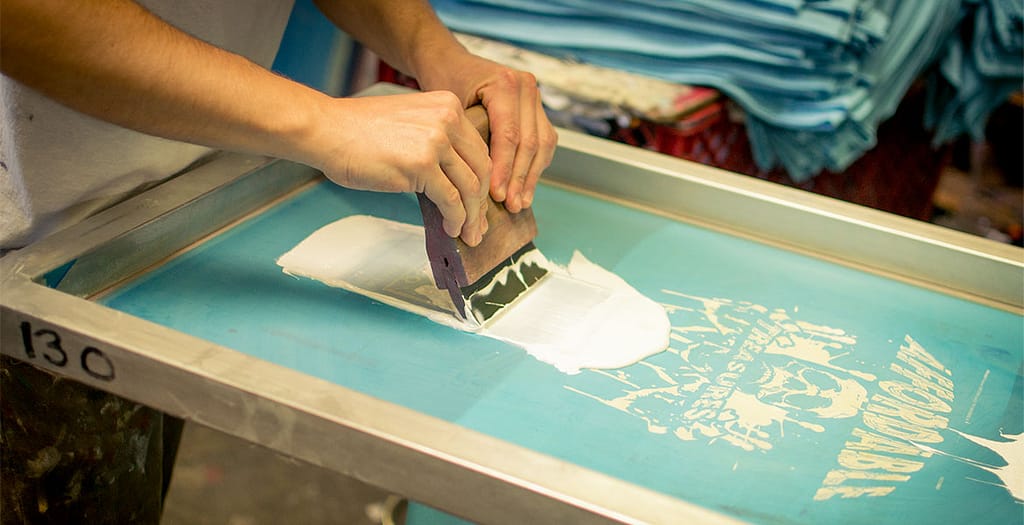
Screen printing is a classic technique. It uses stencils and mesh screens to apply vibrant colors onto fabric. This method works best for bold, simple designs. It’s durable and ideal for large-scale production. If you want long-lasting prints with sharp details, screen printing is a reliable choice.
Direct-to-Garment (DTG)
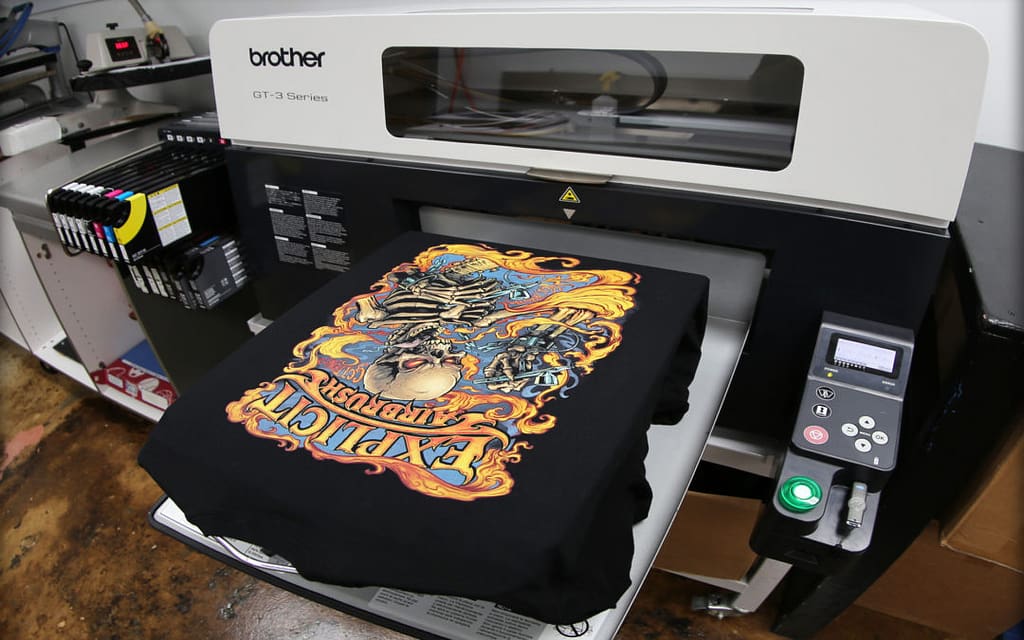
DTG printing offers precision. It uses advanced printers to apply ink directly onto fabric. This method captures intricate details and gradients, making it perfect for complex designs. DTG works well for small batches or custom orders. It gives you flexibility without compromising quality.
Dye Sublimation
Dye sublimation creates seamless, all-over prints. It uses heat to transfer dye onto synthetic fabrics. The result is a smooth, vibrant design that won’t fade or crack. This method is perfect for creating statement pieces with bold patterns or photographic prints.
Heat Transfer
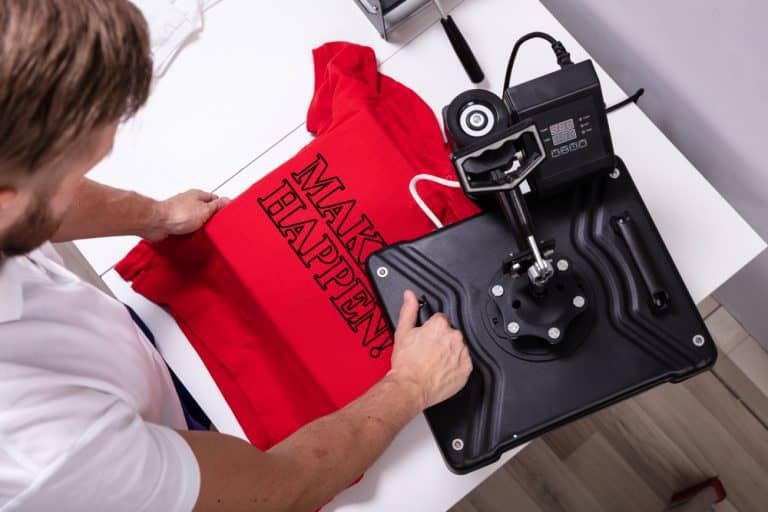
Heat transfer printing involves applying designs using heat and pressure. It’s versatile and works on various fabrics. This method is great for adding logos, text, or small details. It’s also cost-effective for short runs or personalized items.
Embroidery
Embroidery adds texture and elegance. It uses threads to create raised designs on fabric. This technique is perfect for adding logos, monograms, or decorative patterns. Embroidery enhances the durability and sophistication of your tops, making them stand out.
“Printing is where creativity meets craftsmanship. The right method can turn a simple top into a masterpiece.”
Dyeing Techniques
Dyeing gives fabric its color and character. It’s a crucial step in creating visually appealing and cohesive designs. Let’s explore two popular dyeing techniques:
Yarn Dyeing for Consistent Colors
Yarn dyeing involves coloring the yarn before weaving it into fabric. This method ensures consistent colors throughout the material. It’s ideal for creating patterns like stripes or plaids. Yarn-dyed fabrics maintain their vibrancy even after multiple washes. If you want durable and uniform colors, yarn dyeing is the way to go.
Piece Dyeing for Design Flexibility
Piece dyeing happens after the fabric is woven. It allows you to dye entire rolls of fabric in a single color. This method offers flexibility, as you can adjust colors based on trends or customer preferences. Piece dyeing is efficient and works well for solid-colored tops. It’s a practical choice for meeting diverse design needs.
“Dyeing isn’t just about adding color—it’s about bringing your vision to life.”
By mastering these printing and dyeing techniques, you can elevate your women’s tops. Whether you’re aiming for bold prints or subtle hues, these methods help you create garments that captivate and inspire.
Quality Control Measures
Quality control is the backbone of producing exceptional women’s tops and blouses. It ensures that every piece meets the highest standards, leaving your customers satisfied and loyal. Let’s dive into the key processes and why they matter.
Inspection Processes
Checking for stitching inconsistencies and fabric flaws
Every stitch matters when crafting a blouse. You need to examine each garment closely to spot any stitching inconsistencies. Uneven seams or loose threads can compromise the durability and appearance of the blouse. By catching these issues early, you maintain the integrity of your product.
Fabric flaws are another critical factor. Small imperfections like snags, discoloration, or weak spots in the fabric can affect the overall quality. Inspecting the fabric before and after assembly helps you ensure that only flawless materials make it into your final product. This step not only enhances the blouse’s longevity but also boosts its visual appeal.
Ensuring standardized size charts for consistent fitting
Fit plays a huge role in how customers perceive your blouse. A well-fitted blouse can make someone feel confident and stylish, while an ill-fitting one can lead to disappointment. To avoid this, you must rely on standardized size charts. These charts act as a guide, ensuring that every blouse fits as intended, regardless of the style or design.
During inspections, compare the finished blouse to the size chart. Check measurements like bust, waist, and sleeve length to confirm accuracy. Consistency in sizing builds trust with your customers, as they know they can count on your brand for a reliable fit.
“Attention to detail during inspections can determine the quality of a blouse and set your brand apart.”
Importance of Quality Control
Enhancing customer satisfaction and brand reputation
Quality control isn’t just about catching mistakes—it’s about creating a product that exceeds expectations. When you deliver a blouse free of flaws and inconsistencies, you enhance customer satisfaction. Happy customers are more likely to return and recommend your brand to others.
Your reputation as a manufacturer depends on the quality of your products. A single poorly made blouse can tarnish your image, while consistent excellence can elevate your brand. By prioritizing quality control, you show your commitment to delivering value and style to your customers.
“Quality is never an accident; it is always the result of intelligent effort.” – John Ruskin
This quote reminds us that achieving high standards requires dedication and attention to detail. By investing in thorough inspections and maintaining consistency, you create blouses that stand out in the competitive world of women’s fashion.
Packaging and Branding Strategies
Professional Packaging

Options for protecting garments during shipping
Packaging plays a crucial role in ensuring your garments reach customers in perfect condition. You need to choose materials that protect the tops from damage during transit. Polybags are a popular option. They shield garments from moisture, dust, and dirt. For added protection, consider using padded envelopes or boxes with tissue paper to prevent wrinkles and creases.
If you’re shipping delicate fabrics like silk or lace, extra care is essential. Use bubble wrap or foam inserts to cushion the garments. This prevents any potential damage caused by rough handling. Always seal the packaging securely to avoid accidental openings during shipping. By prioritizing protective packaging, you show customers that you value their purchase and care about delivering a flawless product.
Adding a professional touch with branded packaging
Branded packaging transforms a simple delivery into a memorable experience. It’s your chance to make a lasting impression. Start with custom boxes or bags featuring your logo and brand colors. This creates a cohesive and professional look. Add tissue paper, ribbons, or stickers for an extra touch of elegance.
Including a thank-you card or a personalized note can elevate the unboxing experience. Customers appreciate small gestures that make them feel valued. You can also use eco-friendly materials for your packaging. This aligns with sustainable practices and appeals to environmentally conscious buyers. Branded packaging not only protects your garments but also strengthens your brand identity.
“Your packaging is the first physical interaction customers have with your brand. Make it count.”
Labeling and Tags
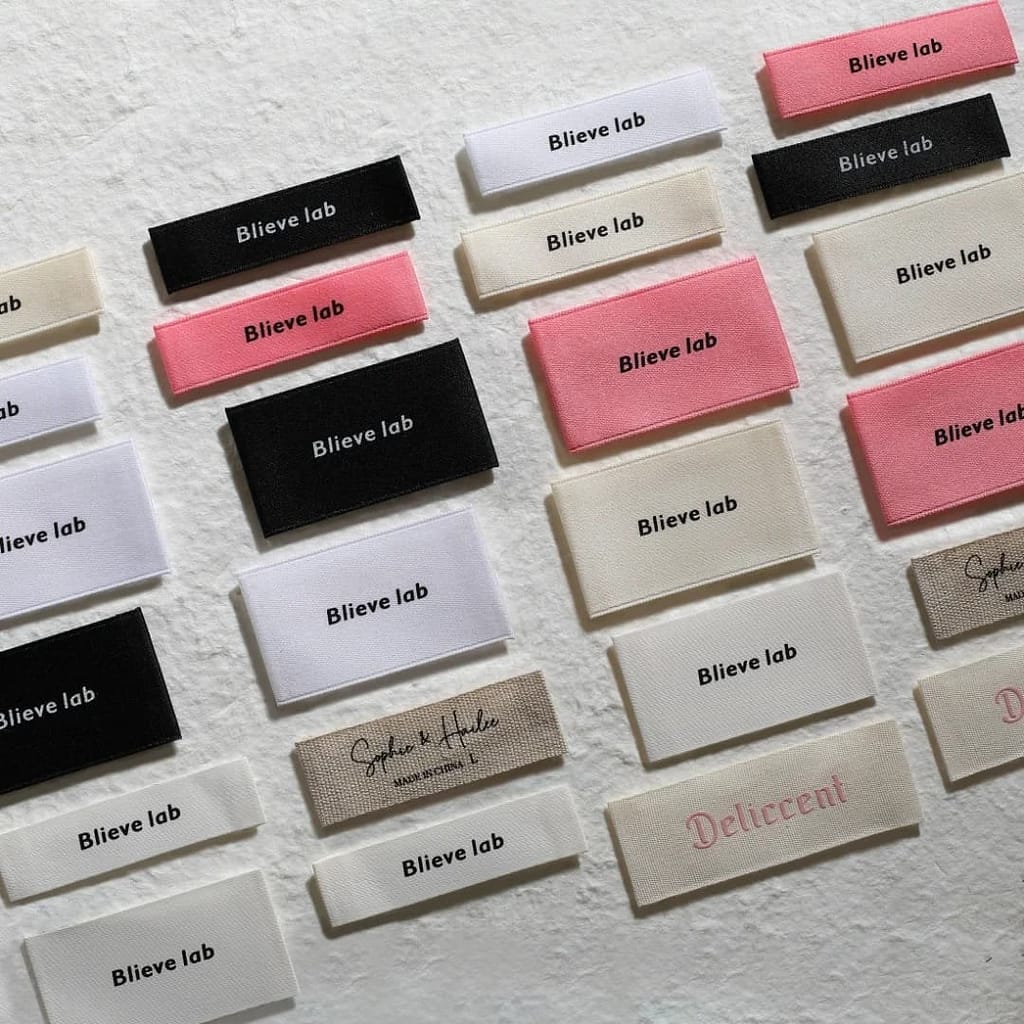
Including care instructions and brand identity
Labels and tags are more than just functional—they’re an extension of your brand. Care instructions help customers maintain the quality of their tops. Include clear washing, drying, and ironing guidelines. For example, delicate fabrics like silk may require hand washing, while cotton tops can handle machine washing. Providing this information ensures your garments last longer, enhancing customer satisfaction.
Your labels should also reflect your brand identity. Use your logo, brand name, and a tagline if you have one. Choose fonts and colors that align with your overall branding. Hang tags offer another opportunity to connect with your customers. You can include a short message about your brand’s story, values, or commitment to sustainability. These details create a deeper connection and leave a positive impression.
“A well-designed label is like a signature—it tells customers who you are and what you stand for.”
By focusing on professional packaging and thoughtful labeling, you elevate your women’s tops from products to experiences. These strategies not only protect your garments but also build trust and loyalty with your customers.
Caring for Women’s Tops and Blouses
Proper care ensures your blouse remains as stunning as the day you bought it. Whether it’s a delicate silk blouse or a casual cotton top, understanding how to wash, dry, iron, and store your garments can make all the difference. Let’s explore some practical tips to keep your wardrobe looking fresh and elegant.
Washing and Drying
Hand washing delicate fabrics like silk
Silk blouses exude luxury, but they require extra attention. Hand washing is the best way to preserve their softness and sheen. Fill a basin with lukewarm water and add a gentle detergent designed for delicate fabrics. Submerge the blouse and gently swirl it around for a few minutes. Avoid scrubbing or wringing, as this can damage the fibers. Rinse thoroughly with cool water and gently press out excess moisture with a clean towel.
For other delicate fabrics like Tencel or rayon, follow similar steps. These eco-friendly materials, often used in sustainable blouses, benefit from gentle handling. By taking the time to hand wash, you extend the life of your favorite pieces.
Air drying to avoid damage
Drying your blouse correctly is just as important as washing it. Air drying is the safest option for most fabrics. Lay the blouse flat on a clean towel or hang it on a padded hanger to maintain its shape. Keep it away from direct sunlight, which can fade colors and weaken fibers. For heavier fabrics like linen, ensure proper airflow to prevent mildew.
Avoid using a dryer for delicate or natural fabrics. The heat can shrink or distort the material, leaving your blouse unwearable. Air drying not only protects the fabric but also helps retain its original fit and drape.
Ironing and Storing
Using appropriate temperatures for ironing
Ironing can restore the crispness of your blouse, but it’s essential to use the right temperature. Check the care label for guidance. Silk and rayon require low heat, while cotton and linen can handle higher settings. Use a pressing cloth to protect delicate fabrics from direct heat. For stubborn wrinkles, consider using a steamer instead of an iron. Steam gently relaxes the fibers without causing damage.
If your blouse features embroidery or embellishments, iron it inside out. This prevents flattening or discoloration of the decorative details. Taking these precautions ensures your blouse looks polished and professional every time you wear it.
Proper storage to maintain garment quality
Storing your blouse correctly keeps it in pristine condition. Use padded or wooden hangers for structured blouses to prevent shoulder marks. For softer fabrics like jersey or modal, fold them neatly and place them in a drawer. Avoid overcrowding your closet, as this can cause wrinkles and creases.
For long-term storage, especially for seasonal items, use breathable garment bags. These protect your blouses from dust and pests while allowing air circulation. Add a sachet of lavender or cedar to keep them fresh and deter moths. Proper storage not only preserves the quality of your blouse but also makes it easier to find and enjoy your favorite pieces.
“Caring for the blouse you love isn’t just about maintenance—it’s about preserving memories and moments tied to each piece.”
By following these simple yet effective care tips, you ensure your blouses remain timeless staples in your wardrobe. Whether it’s a trendy crop top or a classic button-down, proper care enhances their longevity and keeps you looking your best.
How to Style Blouses and Tops
Styling blouses and tops can transform your outfit from ordinary to extraordinary. Whether you’re dressing for a casual day out or a formal event, the right combinations and accessories can make all the difference. Let’s explore some practical tips to help you master how to style blouses for any occasion and season.
Styling for Different Occasions
Pairing tops with skirts, pants, or jeans
Pairing your blouse with the right bottom creates a balanced and polished look. For a professional setting, tuck a classic button-down blouse into tailored pants or a pencil skirt. This combination exudes confidence and sophistication. If you’re heading out for a casual brunch, pair a flowy peasant blouse with skinny jeans. The relaxed fit of the blouse complements the sleek silhouette of the jeans, creating a stylish yet comfortable outfit.
For evening events, consider pairing a wrap blouse with a midi skirt. The wrap design highlights your waist, while the skirt adds elegance. Crop tops work beautifully with high-waisted pants, creating a trendy and youthful vibe. Experiment with different textures and colors to find combinations that reflect your personality.
Accessorizing with statement pieces
Accessories can elevate your blouse and complete your look. A bold necklace can transform a simple V-neck blouse into a statement piece. For off-the-shoulder tops, opt for dangling earrings to draw attention to your neckline. Belts are another great accessory. Cinch a loose tunic blouse at the waist with a wide belt to create a flattering silhouette.
Scarves add versatility to your outfit. Drape a lightweight scarf over a collared blouse for a chic touch. Handbags and shoes also play a role in styling. Pair a structured bag and heels with a collared blouse for a polished look, or go for a crossbody bag and sneakers with a tank top for a casual vibe. Accessories let you personalize your outfit and adapt it to different occasions.
“Accessories are like the punctuation marks of fashion—they complete the sentence.”
This quote reminds us that even the smallest details can make a big impact.
Adapting to Seasons
Lightweight fabrics for summer
Summer calls for breathable and lightweight fabrics. Opt for cotton or linen blouses to stay cool and comfortable. Pair a sleeveless blouse with denim shorts for a laid-back summer look. Halter tops and tank tops are also great choices for warmer days. Choose light colors like white, pastel, or floral prints to reflect sunlight and keep you feeling fresh.
For beach outings, a tunic blouse works perfectly as a cover-up over your swimsuit. Its loose fit and airy fabric make it ideal for hot weather. When styling for summer, prioritize comfort without compromising on style.
Layering options for winter
Winter styling is all about layering. Start with a fitted blouse as your base layer. A high-neck blouse pairs well with a chunky knit sweater or cardigan. For added warmth, layer a blazer or coat over your blouse. This combination works for both casual and professional settings.
Long-sleeve blouses with bishop or puff sleeves add elegance to your winter wardrobe. Pair them with wool trousers or a pleated skirt and tights. Scarves, gloves, and boots complete the look while keeping you cozy. Experiment with textures like velvet or flannel to add depth to your outfit. Layering not only keeps you warm but also allows you to showcase your blouse in creative ways.
“Fashion is about dressing according to what’s fashionable. Style is more about being yourself.”
Embrace your unique style while adapting to the seasons, and your outfits will always stand out.
By understanding how to style blouses for different occasions and seasons, you can create versatile and stunning looks. Whether you’re pairing tops with jeans or layering for winter, these tips help you make the most of your wardrobe.
Embracing Sustainability in Manufacturing
Sustainability in manufacturing isn’t just a trend—it’s a responsibility. As a creator of women’s tops and blouses, you have the power to make choices that benefit both your customers and the planet. By adopting sustainable practices and learning from ethical brands, you can lead the way in reshaping the fashion industry.
Sustainable Practices
Using eco-friendly materials and processes
Choosing eco-friendly materials is one of the most impactful steps you can take. Fabrics like organic cotton, bamboo, and TENCEL™ lyocell not only feel luxurious but also reduce environmental harm. These materials require fewer resources to produce and avoid harmful chemicals, making them safer for both the wearer and the planet. For example, organic cotton eliminates the use of pesticides, while TENCEL™ is made from sustainably sourced wood pulp.
In addition to materials, the processes you use matter. Opt for low-impact dyeing techniques that minimize water and energy consumption. Digital printing methods, such as Direct-to-Garment (DTG), reduce waste by applying designs directly onto fabric without excess ink. By integrating these practices, you create blouses that are not only stylish but also environmentally conscious.
“Sustainable fashion is about more than just looking good—it’s about doing good.”
This mindset helps you align your manufacturing goals with the values of today’s conscious consumers.
FAQ
What is the first step in manufacturing women’s tops?
The process begins with design and conceptualization. You start by brainstorming ideas, sketching designs, and defining the purpose of the top. This step sets the foundation for the entire production process. Whether you’re creating a casual blouse or a formal top, this stage allows you to bring your vision to life.
Why is pattern-making important in manufacturing?
Pattern-making ensures your designs translate into well-fitted garments. It acts as a blueprint for cutting fabric accurately. Without precise patterns, the final product may not fit as intended. Tools like CAD software can help you create detailed and accurate patterns, saving time and reducing errors.
How do I choose the right fabric for women’s tops?
Focus on the functionality and style of the top. For casual wear, breathable fabrics like cotton or linen work best. For formal occasions, silk or rayon adds elegance. Consider the fabric’s properties, such as durability, comfort, and breathability. If sustainability matters to you, opt for eco-friendly materials like organic cotton or TENCEL™ lyocell.
What are the benefits of designing for manufacturability (DFM)?
Designing for manufacturability simplifies production, reduces costs, and minimizes waste. By choosing materials that are easy to work with and optimizing the design for efficient assembly, you can speed up production while maintaining quality. This proactive approach ensures your tops are both cost-effective and high-quality.
“DFM isn’t just about saving money—it’s about creating smarter, more efficient processes.”
How can I ensure consistent quality in my products?
Implement a rigorous quality control process. Inspect each garment for stitching flaws, fabric defects, and size inconsistencies. Use standardized size charts to maintain consistent fitting. By catching issues early, you enhance customer satisfaction and protect your brand’s reputation.
What are some sustainable practices in manufacturing women’s tops?
You can adopt several eco-friendly practices, such as using organic or recycled materials, reducing fabric waste, and opting for low-impact dyeing techniques. Efficient pattern-making and renewable energy sources also contribute to sustainability. These steps not only benefit the environment but also appeal to conscious consumers.
How do I care for delicate fabrics like silk?
Hand washing is the safest method for delicate fabrics. Use lukewarm water and a gentle detergent. Avoid wringing or scrubbing the fabric. After washing, air dry the blouse on a padded hanger or lay it flat on a clean towel. Proper care preserves the fabric’s softness and sheen.
What are the most popular styles of women’s tops?
Some of the most loved styles include classic button-downs, tunics, peasant blouses, wrap tops, crop tops, and off-the-shoulder designs. Each style offers unique features, making it suitable for different occasions and preferences. For example, a wrap blouse flatters the waist, while a tunic provides a relaxed fit.
How can I make my tops stand out in a competitive market?
Focus on unique design elements and quality craftsmanship. Incorporate details like embroidery, prints, or statement sleeves. Use high-quality fabrics and ensure precise stitching. Offering versatile styles that cater to various occasions and body types can also set your brand apart.
Why is packaging important in women’s tops manufacturing?
Packaging protects your garments during shipping and creates a memorable unboxing experience. Branded packaging, such as custom boxes or bags, strengthens your brand identity. Including care instructions and thank-you notes adds a personal touch, leaving a lasting impression on your customers.

